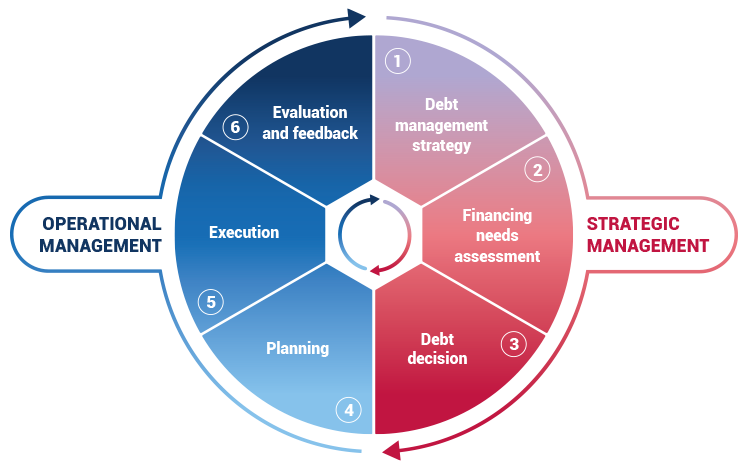Comparing Debt Loan Consolidation Choices: More Discussion Posted Here
Comparing Debt Loan Consolidation Choices: More Discussion Posted Here
Blog Article
Every Little Thing You Need to Find Out About Producing a Personalized Financial Debt Monitoring Strategy
In the realm of personal finance, creating a customized debt management strategy is commonly the cornerstone of accomplishing monetary stability and tranquility of mind. As you navigate the intricacies of producing a customized financial debt monitoring plan, recognizing the intricacies of each action is essential to your economic success.
Examining Your Existing Financial Obligation Situation
One have to first conduct a complete assessment of their current debt responsibilities before developing an efficient debt management strategy. Develop a comprehensive list of each debt, consisting of the total quantity owed, interest prices, minimum regular monthly settlements, and due dates.
After assembling this information, calculate your total debt-to-income ratio by splitting your month-to-month financial obligation settlements by your monthly income. This ratio is a crucial sign of your capacity to manage current debt levels efficiently. Additionally, assess your credit report to determine any errors or discrepancies that may be impacting your credit scores score. Recognizing these elements of your monetary situation will lead you in developing a personalized debt management plan tailored to your specific needs and goals.
Setup Financial Goals and Targets

When setting economic objectives, it is necessary to be certain, measurable, achievable, relevant, and time-bound (SMART) As an example, you might establish a goal to settle a specific amount of financial debt within a particular time frame, such as reducing your bank card balance by $5,000 in the following one year - More Discussion Posted Here. By setting clear targets like this, you can track your progression and remain encouraged to achieve your financial obligation management goals
Additionally, think about prioritizing your debts based upon variables such as rates of interest, outstanding balances, and payment terms. By concentrating on high-interest debts first, you can save cash over time and increase your trip toward financial liberty. Remember, each individual's economic circumstance is special, so customize your targets and goals to fit your private requirements and scenarios.
Creating a Realistic Spending Plan
Crafting a well-defined budget is a basic action in effective financial obligation management and economic preparation. A realistic budget works as a roadmap for your financial health, helping you track your revenue, costs, and financial debt settlements. To create a practical budget, begin by detailing all your resources of revenue. This includes your income, side hustle profits, or any type of other financial inflows. Next, catalog all your taken care of expenditures such as lease or mortgage, utilities, insurance, and loan repayments. Variable expenditures like grocery stores, home entertainment, and transportation should also be included. Set apart in between requirements and wants to prioritize crucial expenditures and determine areas where you can reduce back.
Regularly review and change your spending plan as required to remain on track with your financial goals and financial obligation payment strategy. By sticking to a realistic budget, you can properly handle your financial obligation and job in the direction of an extra safe economic future.
Checking Out Financial Debt Settlement Methods
After developing a reasonable budget plan, the following essential action in reliable financial obligation monitoring is to explore numerous debt repayment techniques. One typical method is the snowball method, where you concentrate on paying off the tiniest financial obligations first while making minimum payments on larger financial debts. This method can assist construct visit homepage energy as you see smaller sized debts being gotten rid of, providing motivation to take on larger ones.
One more approach is the avalanche approach, which entails focusing on debts with the highest possible rate of interest. By targeting high-interest financial debts first, you can reduce the overall quantity you pay in interest with time. This approach may be more cost-efficient in the future, also though it may take longer to see individual financial debts fully paid off.
Debt combination is another alternative where you combine numerous financial obligations right into a single loan with a reduced rate of interest. This can simplify your payment process and potentially lower the overall rate of interest paid. However, it's vital to very carefully think about the charges and terms related to debt consolidation to guarantee it's the ideal choice for your economic circumstance.
Surveillance and Readjusting Your Strategy

Changing your plan might include reapportioning funds to deal with high-interest financial obligations first, negotiating with lenders for reduced interest prices or better payment terms, or checking out additional income sources to quicken financial obligation repayment. As your monetary circumstance advances, your financial debt administration plan should adjust as necessary to stay efficient. By remaining flexible and aggressive in tracking and readjusting your plan, you can maximize your initiatives in the direction of repaying your over here debts successfully and attaining your monetary goals.
Final Thought
Finally, creating a tailored debt administration plan involves assessing current financial obligation, setting economic objectives, producing a realistic spending plan, checking out settlement techniques, and tracking and changing the plan as required. By complying with these steps, individuals can take control of their financial situation and work towards becoming debt-free. It is essential to remain disciplined and committed to the strategy in order to attain long-lasting economic stability.
One must first carry out a thorough assessment of their current financial obligation obligations before creating a reliable financial debt administration plan.After developing a sensible budget plan, the following crucial step in effective debt monitoring is to discover different financial obligation repayment strategies - More Discussion Posted Here.To efficiently manage your debt, continuous tracking and change of your financial obligation additional hints administration plan are necessary elements for lasting financial stability.Changing your plan might include reallocating funds to take on high-interest debts initially, bargaining with creditors for reduced passion rates or better settlement terms, or checking out added revenue resources to accelerate debt settlement.In conclusion, producing a personalized financial debt management plan entails assessing present financial debt, establishing economic objectives, developing a practical budget plan, discovering repayment strategies, and surveillance and readjusting the plan as required
Report this page